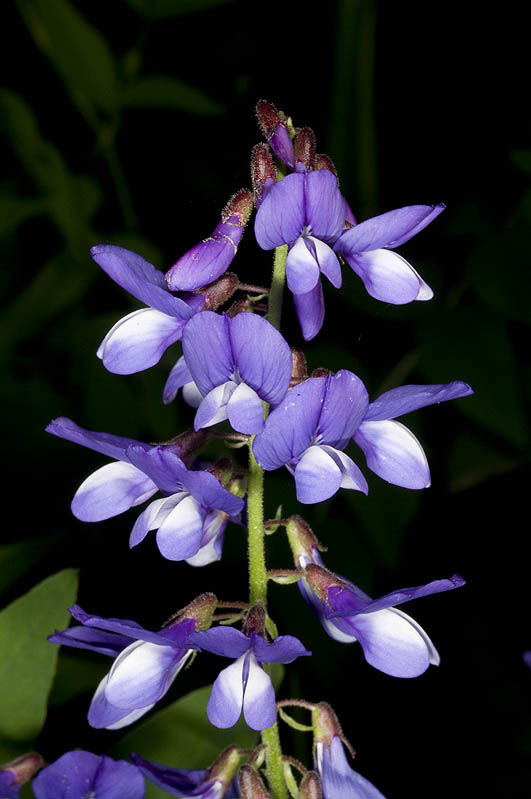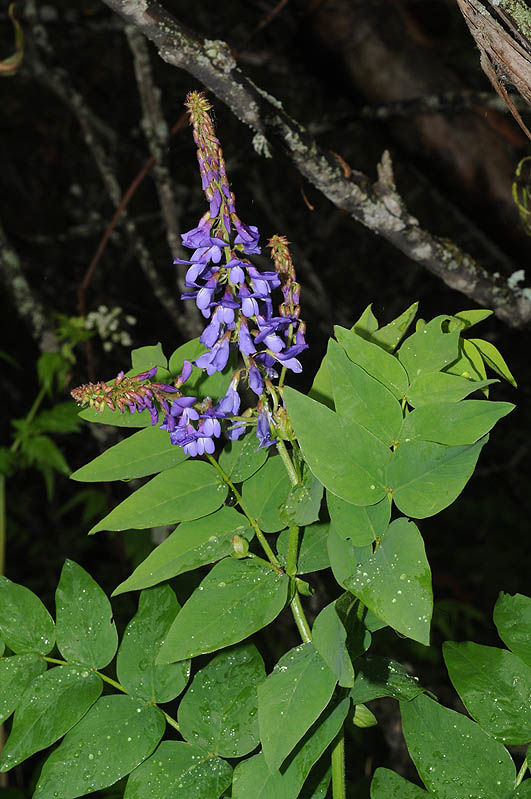Goat's Rue
galega orientalis
Also known as: ["French Lilac","Fever Grass"]
Overview
A herbaceous perennial plant native to the Middle East and parts of Europe, known for its pinnate leaves and pea-like flowers.
Benefits & Perks
["fragrant flowers","wildlife attractant (bees, butterflies, birds)","drought tolerant"]
Botanical Classification
| Phylum: | Magnoliophyta |
| Class: | Magnoliopsida |
| Order: | Fabales |
| Family: | Fabaceae |
| Genus: | Galega |
| Botanical Name: | Galega orientalis |
Plant Characteristics
Basic Information
- Category: Flowers
- Suitable Location: garden bed or container in a sheltered spot
- Suitable For:
- Is Weed: No
- Allergenicity: low
Environmental Needs
- Climate: {"temperatureRange":"–25–30°C"}
- Hardiness: {"zones":"3–7"}
- Misting: rarely required, only if ambient humidity is very low
- Drainage: Well-draining but moisture-retentive.
- Soil Type: Rich, loamy soil with good organic matter and drainage.
Maintenance Level
- Maintenance Level: moderate
- Toughness Level: moderate
- Pruning Frequency: Annually in late winter or early spring before new growth starts.
- Pruning Intensity: Moderate; remove up to one-third of old stems to rejuvenate the plant.
Care Details
Ideal Sunlight Coverage:
Bright indirect light for 6–8 hours daily; tolerates partial shade but may flower less.
Sunlight Tolerance Tips:
Acclimate gradually to intense light to prevent scorching; place in filtered sunlight outdoors or near an east-facing window indoors.
Care Requirements
Care Difficulty
moderatemoderate
Sunlight
full sun to partial shade
Rotate plant weekly for even growth; provide shade during peak summer hours; avoid direct afternoon sun.
Watering
every 7–10 days during active growth, reduce in winter
Water thoroughly until it drains from the bottom, allow soil to dry partially between waterings, and avoid waterlogging.
Soil
fertile, well-drained loam
pH: Slightly acidic to neutral (pH 6.0–7.0).
Ensure soil is not compacted, maintain consistent moisture, and avoid waterlogged conditions.
Temperature
Prefers 60–75°F (15–24°C); can tolerate cooler temperatures but avoid prolonged exposure below 50°F (10°C).
Protect from frost, avoid drafts, maintain consistent temperatures, and adjust care seasonally.
Fertilizing
every 4–6 weeks during spring and summer
Fertilize after watering to prevent root burn; flush soil occasionally to prevent salt buildup; avoid over-fertilizing.
Propagation
Methods
Stem cuttings or division of root clumps.
Step-by-Step Propagation Guide
- Take 4–6 inch cuttings, remove lower leaves, dip in hormone, plant in medium, maintain humidity, and wait for roots.
Best Time: Early spring before active growth begins.
Environment
High humidity (70–80%), warm temperatures (65–75°F), and indirect light.
Medium
Peat-based mix with perlite or coarse sand for good drainage.
Hormone
Optional but recommended for faster rooting.
Timeline
Roots develop in 4–6 weeks; new growth appears in 2–3 months.
Tools Needed
Pruning shears, rooting hormone, plastic bags or propagator, misting bottle.
Quick Tips
Use healthy, non-flowering stems; keep soil consistently moist but not waterlogged; provide bottom heat if possible.
Pruning & Repotting
Pruning Guide
Method
Cut stems back to a healthy bud or lateral branch; thin out crowded areas.
Pruning Plan
Remove dead or weak stems to improve air circulation and encourage bushier growth; shape as needed.
Tools
Clean bypass pruners, gloves, disinfectant for tools.
Checklist
Disinfect tools, prune dead/damaged stems, shape plant, clean up debris, apply fungicide if needed.
Repotting Guide
Best Season
Early spring before active growth begins.
Pot Size
Choose a pot 1–2 inches larger in diameter than the current one.
Method
Remove plant gently, trim roots if necessary, place in new pot with fresh soil, water lightly, and avoid direct sun for a few days.
Suggestions
Repot every 2–3 years or when roots fill the pot; beneficial for rejuvenation and fresh soil.
Checklist
Select new pot, prepare fresh soil, inspect roots, prune if needed, repot carefully, water lightly, and acclimate slowly.
Advanced Care Tips
Watering Mastery
Watering Checklist
Check soil moisture, water deeply, ensure drainage, avoid wetting leaves, adjust frequency by season.
How to Apply Water Properly
Water directly at the root zone, ensuring even moisture distribution without wetting foliage; water early in the morning to minimize evaporation and fungal risk.
Watering Schedule Tips
Water deeply once the top inch of soil feels dry, typically every 7–10 days in spring/summer, reducing frequency to every 2–3 weeks in fall/winter.
Soil Improvement
Add compost or well-rotted manure for fertility; mix in perlite or sand for drainage.
Temperature Stress Management
Signs of Temperature Issues
Chlorosis, stunted growth, bud drop, or leaf necrosis in extreme heat or cold.
Cold Stress
Slows growth, may cause leaf yellowing or dieback if temperatures drop below 40°F (4°C) for extended periods.
Solution: Move to a warmer location, insulate roots with mulch, and reduce watering in cold conditions.
Hot Stress
Leaves may wilt, scorch, or drop; flowering may be reduced in excessive heat above 85°F (29°C).
Solution: Provide shade, increase humidity, water more frequently, and ensure good air circulation.
Fertilizing Guide
Fertilizing Checklist
Use diluted fertilizer, apply during active growth, avoid winter feeding, flush periodically.
Fertilizing Method
Use balanced liquid fertilizer diluted to half strength every 4–6 weeks during spring/summer; cease in fall/winter.
Common Problems & Solutions
Toxicity Warning
Cats
Non-toxicGalega orientalis is not considered toxic to cats under normal circumstances.
⚡ Toxic If:
not applicable
Dogs
Non-toxicGalega orientalis is not considered toxic to dogs under normal circumstances.
⚡ Toxic If:
not applicable
Humans
Non-toxicGalega orientalis is not considered toxic to humans under normal circumstances.
⚡ Toxic If:
not applicable
Frequently Asked Questions
Q: Is Goat's Rue toxic to humans?
A: Yes, it is mildly toxic to humans if ingested in large quantities.
Q: Does Goat's Rue attract wildlife?
A: Yes, it attracts bees, butterflies, and birds due to its fragrant flowers.
Q: Is Goat's Rue drought tolerant?
A: Yes, it is moderately drought tolerant once established.
Quick Reference
| Family: | Fabaceae |
| Care: | moderate |
| Light: | full sun to partial shade |
| Water: | every 7–10 days during activ |
Get Expert Care Tips
Download the Plantious app for personalized care reminders and plant identification!
Google Play App Store








